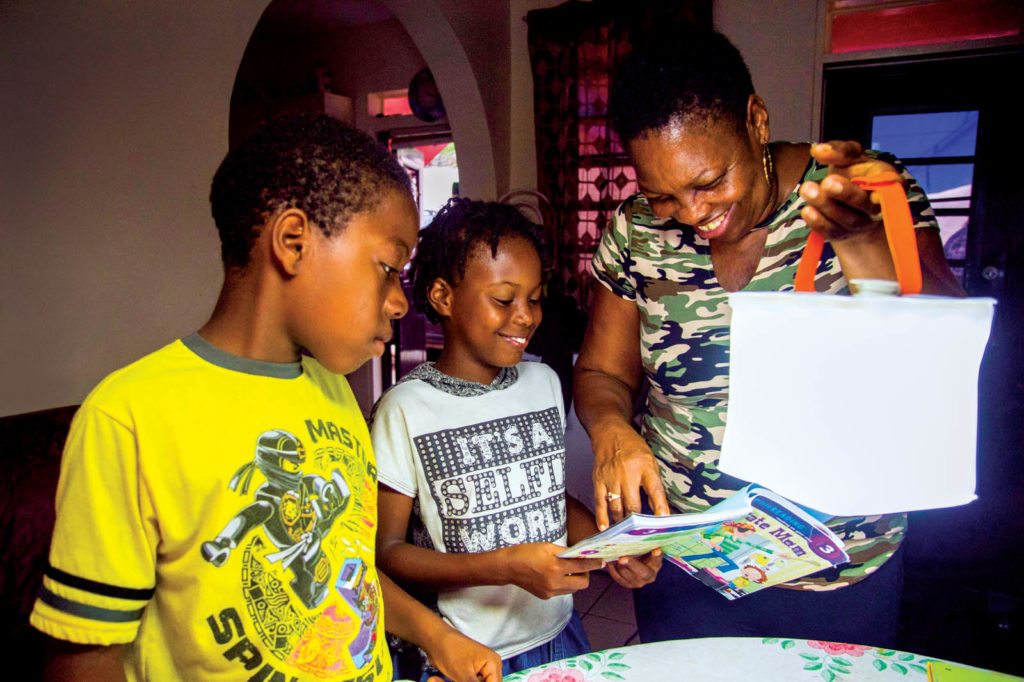by Laurie Junker
Hardly a month goes by without news of a catastrophic weather event somewhere in the world. Whether it’s a hurricane, tsunami, flood or wildfire, the scenes have become distressingly familiar—homes and businesses destroyed, vegetation laid bare and hundreds if not thousands of displaced people seeking the basic necessities of fresh water, food and shelter.
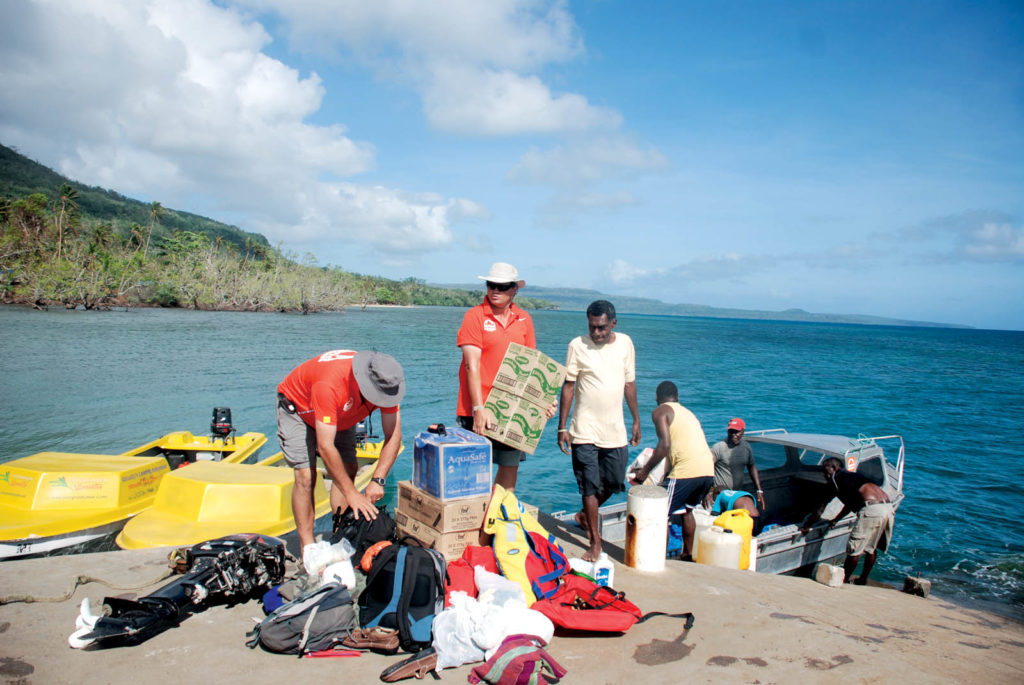
New Zealander Lyndon Tamblyn was tired of watching from the sidelines, and 10 years ago decided to help by training as a disaster responder through a U.K.-based nonprofit agency. Through that organization he served as “boots on the ground” in the aftermath of dozens of disasters, including the 2011 tsunami in Japan and typhoons in the Philippines. Four years ago, Tamblyn took his charitable impulses a step further and founded Byond Disaster Relief New Zealand (Byond NZ) to apply what he’d learned to provide aid efficiently to areas in and around New Zealand and the Pacific islands.
“The big charities are great and have lots of resources, but they cover a huge geography and often move slowly. We and our valued partners can move stuff quite quickly, not only because we’re close, but also because we’re small and have special relationships with other small aid organizations,” Tamblyn observes. “We’re just a bunch of volunteers with regular day jobs, be it a teacher, farmer, engineer or retired police officer who come together, see what aid we have in our toolbox and get it to disaster areas fast.” Byond NZ has responded to disaster events in Nepal (earthquake) the Philippines (typhoon), Fiji (cyclones) and New Zealand Kaikoura (earthquake).
Ultimate sustainability
Tamblyn has been an independent industrial textile agent for the past 25 years and a longtime member of the Outdoor Fabric Products Association of New Zealand (OFPANZ), the New Zealand chapter of the Industrial Fabrics Association International (IFAI). It was at a session on waste reduction and sustainable practices at the annual OFPANZ conference last summer that he had an epiphany. “I was sitting there listening to them talk about what to do with excess, imperfect or used products, and I raised my hand and said, ‘Hey guys, if you have leftover PVC fabric or shade cloth, we’d love to have it to use in disaster areas.’”
That comment led to an impromptu brainstorming session with other OFPANZ members who volunteered ideas of additional kinds of materials, and even skills such as sewing and welding, that could be useful and that they could source or donate. It was obvious that this was an opportunity for a win-win, a way to keep unsaleable materials out of landfills while serving a greater good.
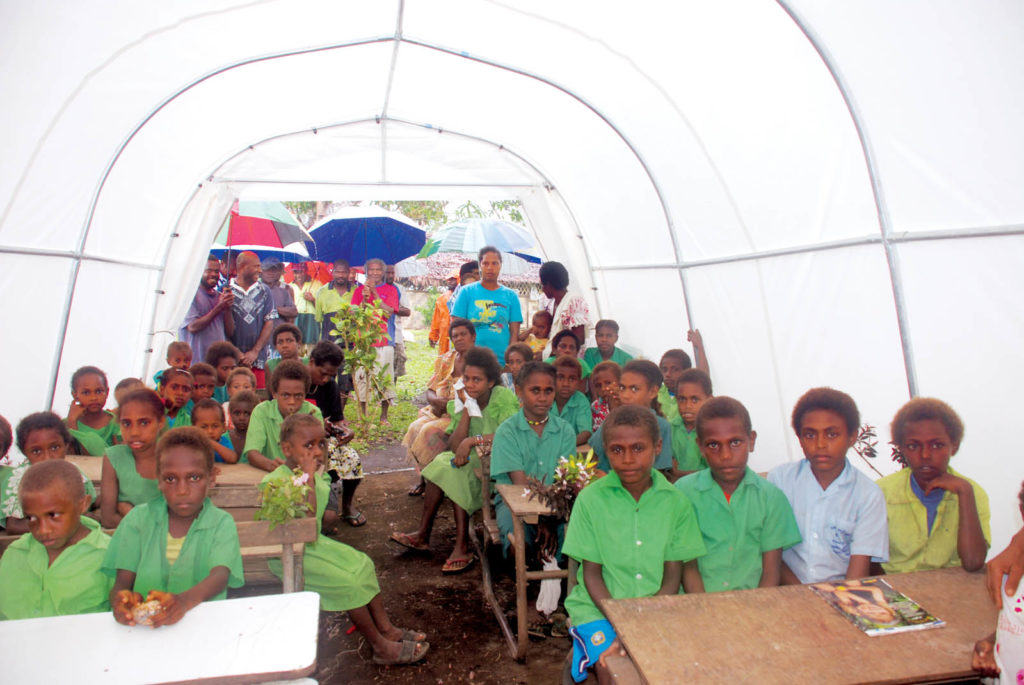
Tamblyn is well-acquainted with the high quality of industrial fabrics, particularly the PVC used to make billboard skins, and knows they can be incredibly useful in the immediate aftermath of a disaster. Tough, waterproof and flexible, the skins can be used for temporary shelters, ground cover for sleeping, tarps for covering food and medical supplies and can even be welded together to create collapsible buckets to collect fresh water. In later stages of recovery, the fabric can be used again as a roofing membrane when rebuilding homes. “A simple piece of fabric has so many uses, and you don’t realize how valuable it is until you have nothing,” Tamblyn observes. “And no one cares if it has advertising on one side.”
Other products and accessories such as ropes, cords, and anchor screws can be useful in building and securing shelters, binding goods for shipment and functioning as bucket handles. Also on Tamblyn’s wish list are inflatable tents, which can be used for medical tents, temporary classrooms or emergency management centers.
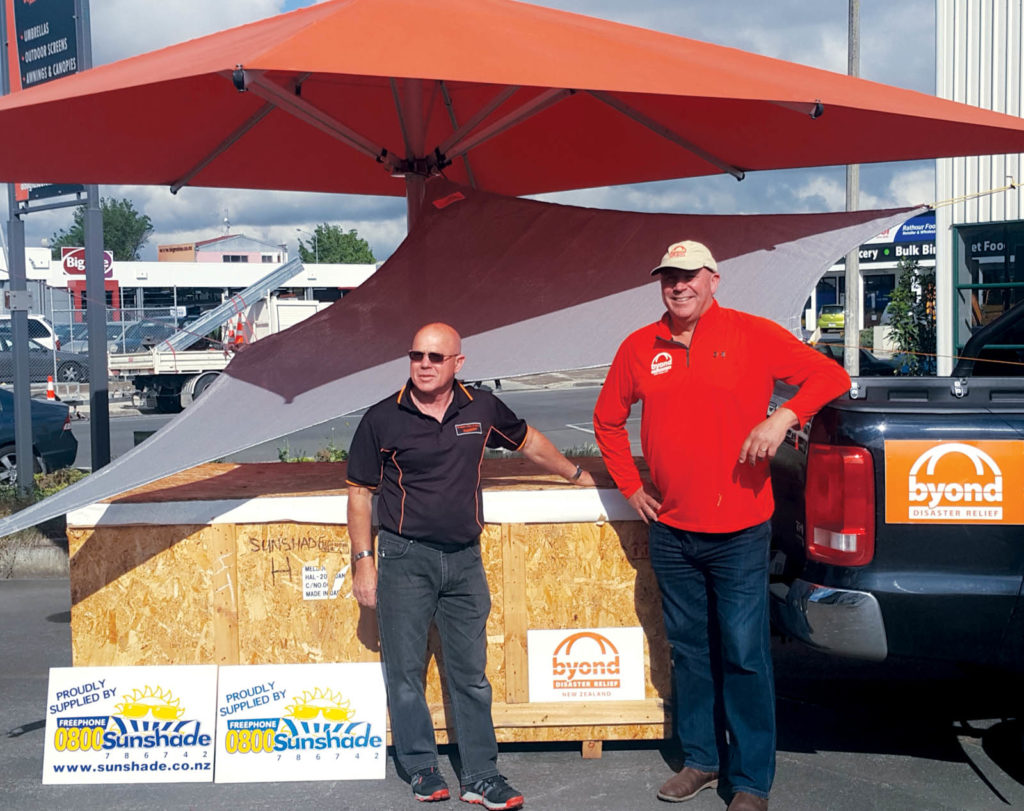
Site specific
The process of distributing aid to a damage-stricken area usually starts with people on-site—either a local contact, one of Byond’s aid partners or someone at an emergency management agency—who can offer their assessment of the situation and give reliable information on what is most needed. Byond NZ then mobilizes and connects with partners such as Sea Mercy (transportation), Rotary clubs (service), SHaRM Foundation (school rebuilding) and others to gather and deliver supplies. All of the work is done by volunteers, mostly mid-career people in their 40s and 50s who have the ability to take a few weeks off and help out.
As nimble as Byond NZ is, the group has faced challenges on the ground, including discovering that some products intended for aid can find their way to the markets for sale. The team has learned that stamping aid items with “Byond Disaster Relief NZ Do Not Sell” is a good deterrent for this kind of theft. A thornier issue is navigating the tax-exemption rules in various countries. Some grant a two-week tax-free window immediately following a disaster, but after that charities must negotiate a tax-exempt status with the customs minister and/or local government to avoid paying a tax on donated items such as buckets or water purification systems.
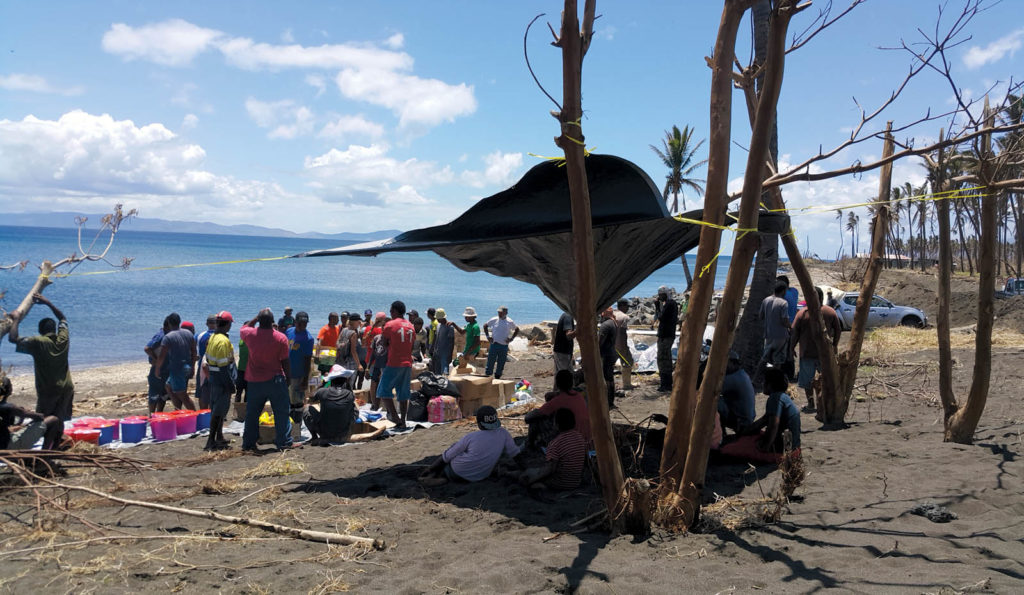
Byond NZ also occasionally runs into cultural challenges such as villages taking issue with the color of their tarpaulin relative to their neighbors’. “We try to be culturally sensitive and compassionate because we’re in their home, but ultimately we’re there to meet basic survival needs. Our primary concern is giving them a high-quality shelter that will last until they can rebuild their own homes,” Tamblyn says.
Another dilemma that’s common in the aid industry is that of well-meaning people who want to donate stuff Byond doesn’t need. “People often want to give things we can’t use, like a bunch of old ski jackets, but what do people on a tropical island need with a ski jacket?” Tamblyn adds.
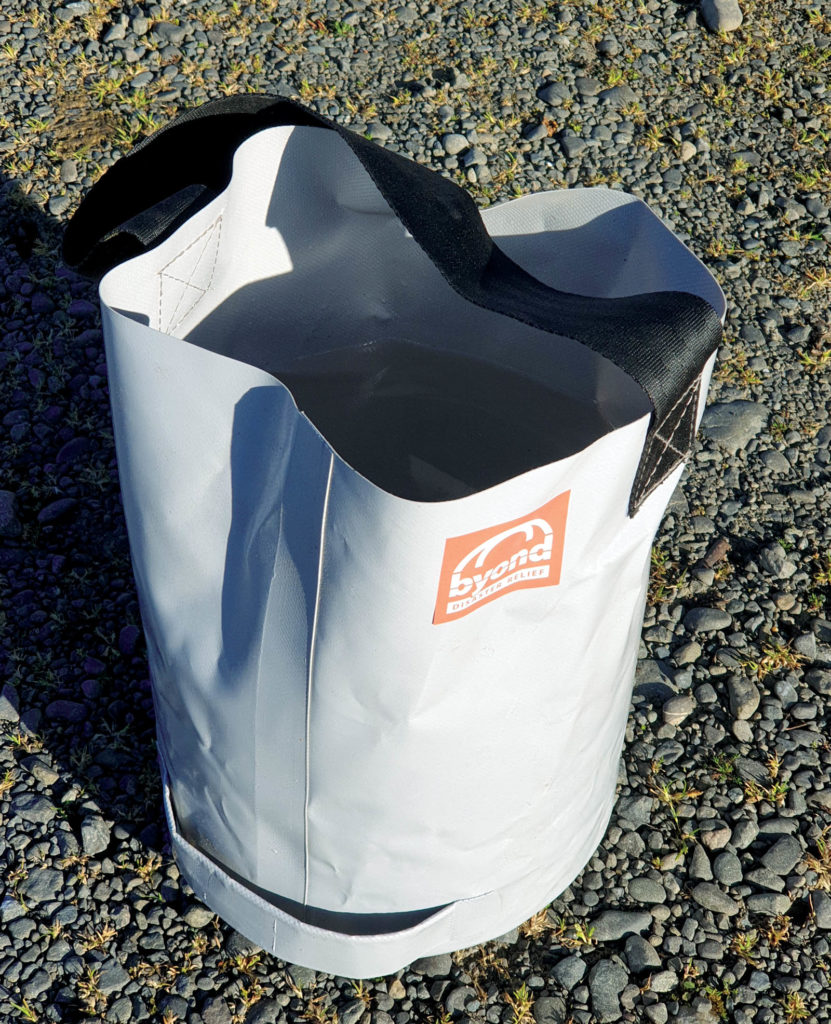
Now that Byond NZ has four years of disaster relief experience, the organization is taking steps to improve planning and readiness: for example, by collecting supplies in advance and storing them in a centrally located warehouse so that when cyclone season arrives Byond is ready and can deliver aid quickly. The organization is also continuously reaching out to other companies, charities and agencies to see where they can work together. According to Tamblyn, “Disaster aid is lots of individuals and organizations coming together with different things to offer, but because everyone’s focused and has the right resolve, it just seems to work out. It’s a real joy to see.”
Laurie Junker is a freelance writer based in Minneapolis, Minn.
SIDEBAR: The future of disaster relief
The LuminAID® PackLite, an inflatable solar-powered lantern made from transparent thermoplastic polyurethane, provides invaluable light and, with a USB port option, phone charging to disaster areas where electricity has been knocked out. Other textile products, such as those that use nanofiltration to convert saltwater to fresh drinking water, may one day be a game-changer for disaster relief operations. For more details, visit www.luminaid.com.
 TEXTILES.ORG
TEXTILES.ORG



